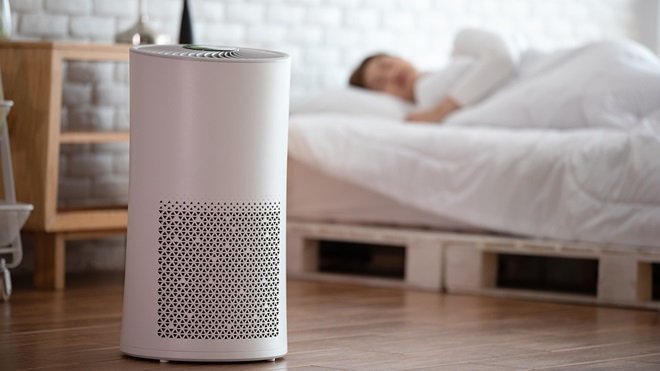Yes, air purifiers can collect bacteria and viruses. They use filters to trap these particles.
But how effective are they? Air quality is a concern for many households today. With the rise in pollution and the spread of airborne diseases, people seek ways to keep their indoor environments safe. Air purifiers promise cleaner air by removing contaminants.
These devices often claim to capture bacteria and viruses. But do they really work as advertised? In this blog, we will explore the science behind air purifiers. We will look at how they function and their effectiveness in trapping harmful particles. This information will help you decide if an air purifier is a worthy investment for your home.
How Air Purifiers Work
Understanding how air purifiers work is key to knowing if they can collect bacteria and viruses. Air purifiers use different methods to clean the air. They trap or destroy harmful particles, including bacteria and viruses. Let’s explore the basic mechanisms and types of air purifiers.
Basic Mechanisms
Air purifiers use filters to trap particles. HEPA filters capture tiny particles, including bacteria and viruses. Some use UV light to kill germs. Others use ions to attract and trap particles. Each method has a specific way of dealing with bacteria and viruses.
Types Of Air Purifiers
There are several types of air purifiers. HEPA purifiers are common and effective. They trap particles as small as 0.3 microns. UV air purifiers use ultraviolet light. This light destroys the DNA of bacteria and viruses. Ionic purifiers release charged ions. These ions attach to particles and make them easier to capture. Activated carbon purifiers remove odors and gases. Some combine these methods for better results.
Hepa Filters And Microorganisms
Can air purifiers collect bacteria and viruses? The answer is often yes. A key component in many air purifiers is the HEPA filter. This filter is designed to capture very small particles, including microorganisms. But how effective are HEPA filters against bacteria and viruses? Let’s explore.
What Is A Hepa Filter?
A HEPA filter stands for High-Efficiency Particulate Air filter. It is a type of mechanical air filter. It works by forcing air through a fine mesh. This mesh traps harmful particles like pollen, pet dander, dust mites, and even tobacco smoke.
To qualify as HEPA, a filter must meet strict standards. It must remove at least 99.97% of particles that are 0.3 microns in diameter. This is the most penetrating particle size (MPPS), making HEPA filters very effective.
Effectiveness Against Bacteria And Viruses
HEPA filters are highly effective at trapping bacteria. Most bacteria are larger than 0.3 microns. This means they get caught in the filter’s fine mesh. Viruses are smaller, often ranging from 0.004 to 0.1 microns. Despite their small size, HEPA filters can still capture many viruses. This is due to the way air flows through the filter, causing particles to collide with the fibers and get trapped.
In a study, HEPA filters reduced airborne bacteria by 99.9%. They also significantly reduced virus particles. This makes them a powerful tool for improving indoor air quality.
| Particle | Size (Microns) | HEPA Filter Effectiveness |
|---|---|---|
| Bacteria | 0.2 – 10 | High |
| Viruses | 0.004 – 0.1 | Moderate to High |
Using a HEPA filter in your air purifier can greatly reduce the number of bacteria and viruses in your home. This can help create a healthier living environment. Remember, while HEPA filters are effective, they are part of a larger strategy for maintaining clean air.
Uv-c Light Technology
UV-C Light Technology has gained popularity in air purifiers. This technology uses ultraviolet light to kill or deactivate bacteria and viruses in the air. Many people wonder if it is effective. Let’s explore how UV-C light works and its impact on bacteria and viruses.
How Uv-c Light Works
UV-C light is a type of ultraviolet light. It has a short wavelength. This wavelength can penetrate the cells of bacteria and viruses. Once inside, it damages their DNA or RNA. This damage prevents them from reproducing. Without the ability to reproduce, these microorganisms die.
Impact On Bacteria And Viruses
UV-C light can be very effective against bacteria and viruses. Studies have shown that it can kill up to 99.9% of these microorganisms. It is especially useful for airborne pathogens. When air passes through an air purifier with UV-C light, the light kills or deactivates the harmful particles. This helps to keep the air clean and safe.
UV-C light is a powerful tool in air purifiers. It adds an extra layer of protection. This makes it a valuable feature for those concerned about indoor air quality.

Credit: www.amazon.com
Ionizers And Electrostatic Filters
Ionizers and electrostatic filters are popular in air purifiers. They capture bacteria and viruses from the air. These technologies use electric charges to trap particles. They can help improve indoor air quality.
How Ionizers Function
Ionizers release negative ions into the air. These ions attach to particles like dust, bacteria, and viruses. The charged particles then stick to surfaces or get trapped in filters. This reduces the number of harmful particles in the air.
Effectiveness In Trapping Microorganisms
Ionizers and electrostatic filters are effective at capturing small particles. They can trap bacteria and viruses that are too small for regular filters. This helps reduce the spread of illnesses in your home. But, they should be used with other air cleaning methods for best results.
Activated Carbon Filters
Activated carbon filters are a key component in many air purifiers. They are known for their ability to trap various pollutants. These filters use activated carbon to adsorb impurities from the air. But can they collect bacteria and viruses? Let’s explore this further.
Role Of Activated Carbon
Activated carbon is highly porous. It can trap gases, odors, and chemical vapors. The pores in activated carbon increase its surface area. This allows it to capture more pollutants. Activated carbon filters are effective in removing volatile organic compounds (VOCs).
Effect On Bacteria And Viruses
Activated carbon filters are not designed to capture bacteria and viruses directly. They can adsorb some particles that carry these microorganisms. But, they do not eliminate bacteria and viruses. For complete protection, air purifiers often use additional technologies.
Pairing activated carbon filters with HEPA filters can be effective. HEPA filters can trap airborne particles, including bacteria and viruses. This combination provides better air purification. It ensures a cleaner, healthier indoor environment.

Credit: cloroxhomeappliances.com
Real-world Effectiveness
Can air purifiers really collect bacteria and viruses in real-world settings? This is a question many people ask. To understand this, we need to explore the studies and findings. We also need to consider the limitations and challenges.
Studies And Findings
Several studies have shown that air purifiers can help. They reduce the number of airborne bacteria and viruses. One study found that air purifiers with HEPA filters can capture particles as small as 0.3 microns. This includes many bacteria and viruses.
Another study tested air purifiers in hospital settings. It found a significant reduction in airborne pathogens. This suggests that air purifiers can be effective in real-world settings.
| Study | Findings |
|---|---|
| HEPA Filter Study | Captured particles as small as 0.3 microns |
| Hospital Setting Study | Reduced airborne pathogens significantly |
Limitations And Challenges
Air purifiers are not perfect. They have some limitations. One challenge is the size of the room. Larger rooms may need more than one purifier. Another challenge is maintenance. Filters need regular cleaning or replacement. If not, their effectiveness decreases.
Another limitation is the type of filter. Not all filters can capture all types of bacteria and viruses. HEPA filters are good, but not perfect. Some bacteria and viruses are smaller than 0.3 microns. These can escape through the filter.
- Room size affects effectiveness
- Regular maintenance is required
- Filter type matters
Despite these challenges, air purifiers can still be a valuable tool. They help improve air quality and reduce airborne pathogens. Just remember to choose the right type and maintain it well.
Choosing The Right Air Purifier
Choosing the right air purifier is crucial for collecting bacteria and viruses. The right device ensures cleaner air and a healthier environment.
Factors To Consider
Several factors are important when selecting an air purifier. Filter type is one key aspect. HEPA filters are known for their efficiency in trapping small particles. Look for purifiers with true HEPA filters for the best results.
Consider the room size as well. Each air purifier has a specific coverage area. Ensure the device you choose matches the room size for optimal performance.
Noise level is another consideration. Some air purifiers can be noisy, which may be disruptive. Check the noise ratings before making a decision. Quiet models are more suitable for bedrooms and offices.
Maintenance is also a factor. Regular filter changes are necessary for efficiency. Choose a model with easy-to-replace filters to save time and effort.
Top Recommendations
Several air purifiers stand out for their ability to collect bacteria and viruses. The Dyson Pure Cool Link is a strong contender. It uses a HEPA filter and is suitable for larger rooms.
The Honeywell HPA300 is another excellent choice. It offers a high CADR rating and covers large areas. Its filters are easy to replace, making maintenance simple.
The GermGuardian AC4825 is ideal for smaller spaces. It combines a HEPA filter with UV-C light, which helps kill germs. It is compact and affordable.
The Levoit LV-H132 is perfect for personal use. It is small, quiet, and effective. It also uses a true HEPA filter, ensuring clean air in any small room.
Finally, consider the Coway AP-1512HH. It offers a four-stage filtration system. This makes it highly effective at removing pollutants, including bacteria and viruses.

Credit: housefresh.com
Frequently Asked Questions
Can Air Purifiers Remove Bacteria?
Yes, air purifiers can remove bacteria. They use HEPA filters to capture bacteria from the air, improving indoor air quality.
Do Air Purifiers Kill Viruses?
Air purifiers can trap viruses but not kill them. HEPA filters can capture particles, including some viruses, improving air safety.
Are Air Purifiers Effective Against Germs?
Air purifiers are effective against germs. They filter out bacteria and viruses, reducing airborne contaminants and improving air quality.
How Do Air Purifiers Trap Bacteria?
Air purifiers trap bacteria using HEPA filters. These filters capture tiny particles, including bacteria, preventing them from circulating in the air.
Conclusion
Air purifiers can help reduce bacteria and viruses in your home. They capture harmful particles, improving air quality. Choose a purifier with a HEPA filter for best results. Regular maintenance ensures optimal performance. Clean filters often and follow the manufacturer’s guidelines.
Invest in a good air purifier for a healthier living space. This small step can make a big difference. Breathe easier and enjoy a cleaner environment. Consider your needs and budget when selecting a purifier. Stay informed and make the best choice for your family’s health.
Rakib Sarwar is a Registered Pharmacist and a reputed health and wellness blogger. He has a great interest in Air purifiers.
